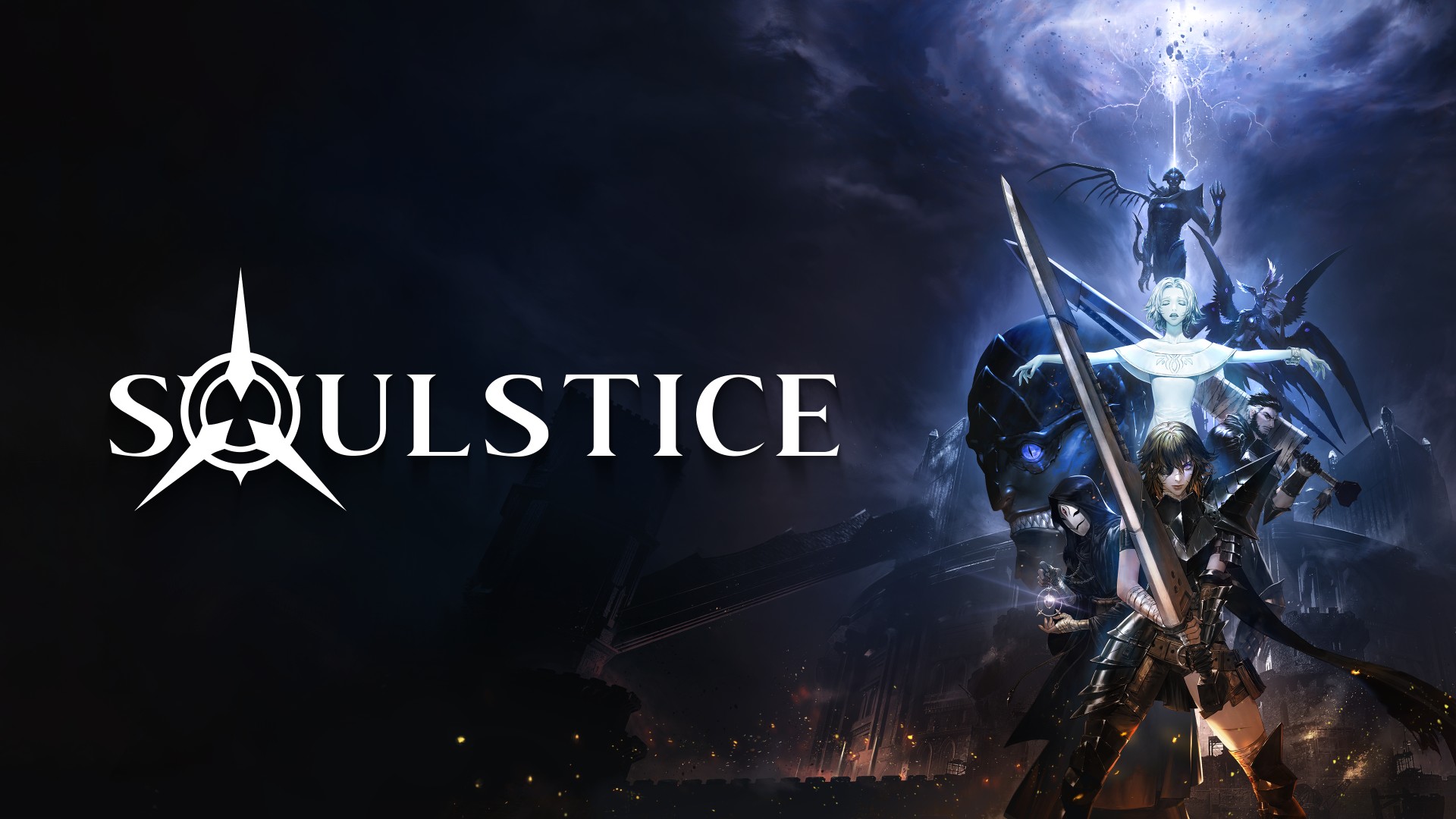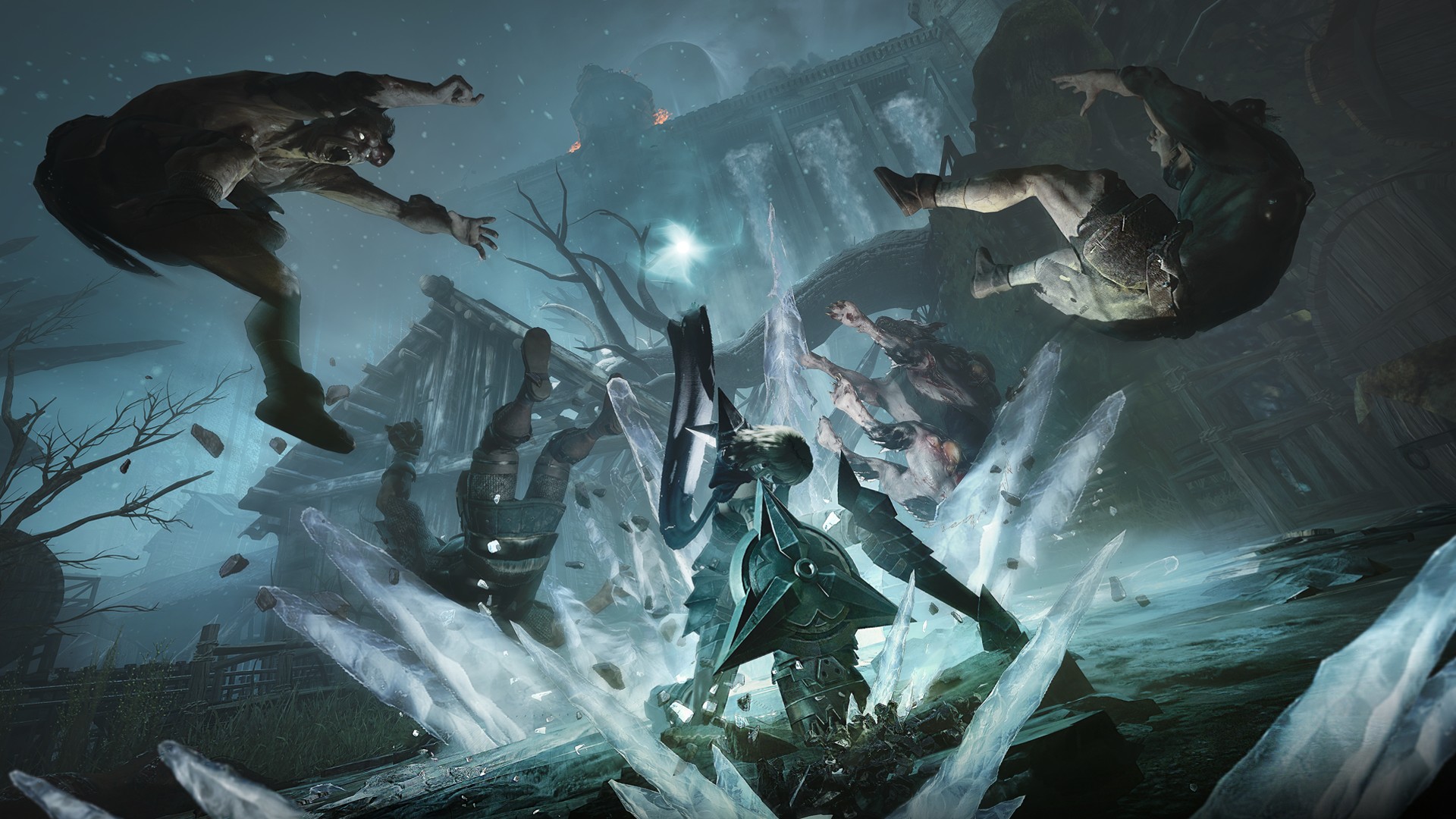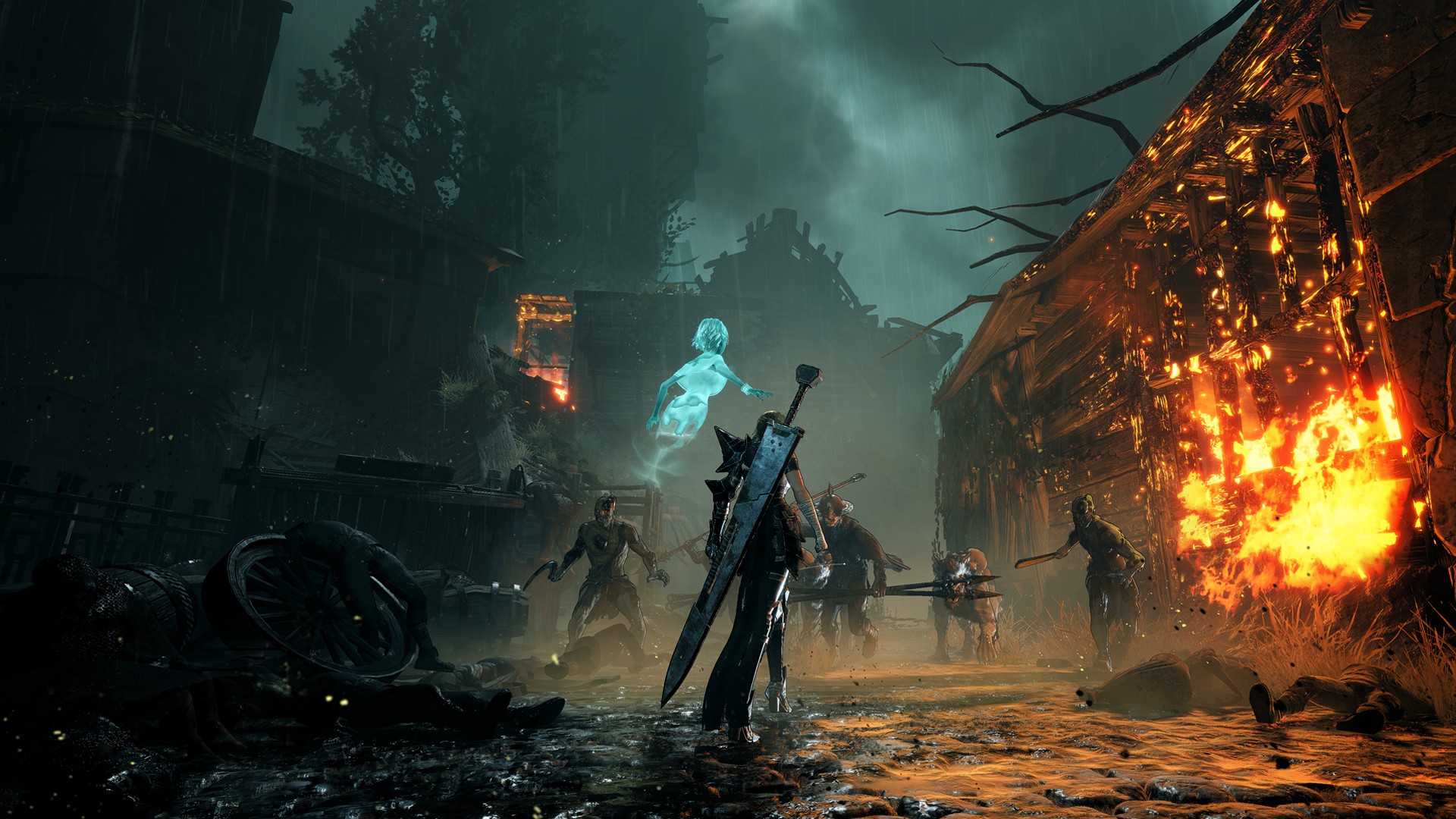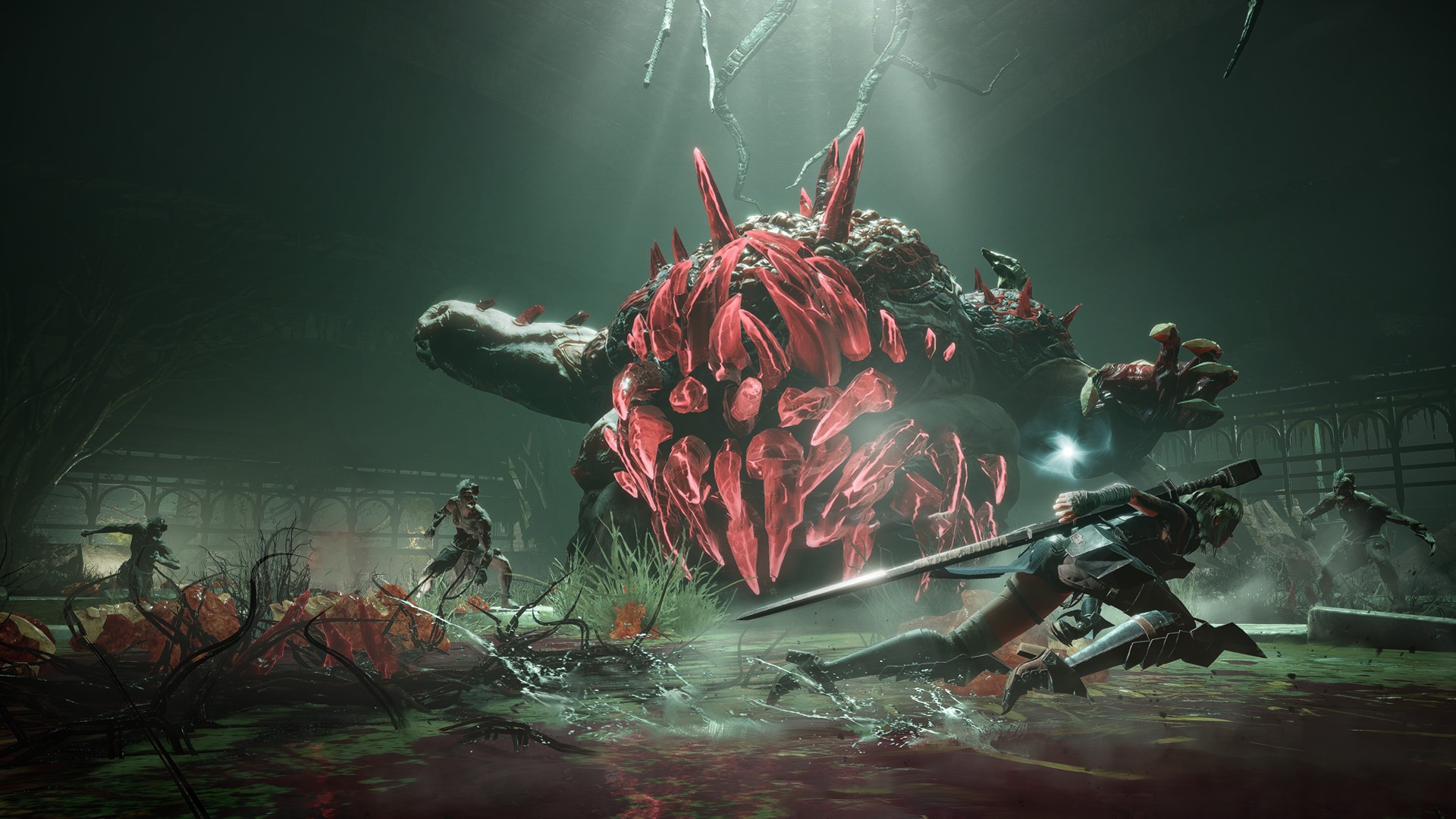Few manga series have had as significant an influence as the blood-soaked classic Berserk. Its effects can be seen in video games, as series like Final Fantasy and Dark Souls have taken liberal inspiration from the late Kentaro Miura’s work. That’s part of what excited me during a preview session of Soulstice; the developers outright said both Berserk and another manga series, Claymore, served as massive inspirations for the upcoming action RPG.
From its dark gothic world to the spiky armor and massive sword of protagonist Briar, it’s easy to see why. Soulstice could finally deliver the Berserk video game experience so many people have always wanted. After both hands-on and hands-off time, I’m incredibly interested to see how the overall experience turns out.
Soulstice’s unique setup has you controlling two different characters at once, sisters named Briar and Lute. While the demo took place part way through the story, the sisters have been transformed into a kind of hybrid weapon known as a Chimera through ritual sacrifice. Briar has a physical body, while Lute is a ghostly apparition constantly hovering over her shoulder.
The idea of duality seeps into every part of the game, both in how the story plays out and the dual-character combat system, which feels like a mix between Devil May Cry and Castlevania: Lords of Shadow. You directly control Briar, who has various weapons used to hack apart enemies. There is, of course, the default massive sword, but the demo also gave me access to a slow but powerful hammer and an AoE chain weapon.
The demo I played had the pair traveling across a massive bridge, trying to gain access to the plagued city of Ilden. As I moved closer to the city, more signs of death and destruction became apparent, and I was forced to cut through hordes of plague-ridden enemies.
Lute will appear on your shoulder during combat and automatically fire off ranged attacks at enemies, similar to Atreus in God of War. However, you control Lute to block attacks with magic (mapped to circle/B on a controller) since Briar doesn’t have any kind of block animation. Lute also has the otherworldly ability to put up blue and red purification fields. Some enemies can only be damaged while the corresponding field is up, but leaving the field up for too long will overwhelm Lute and cause her to disappear for a short period of time.
These different elements might sound confusing at first. Still, it doesn’t take long to get used to the general flow of combat, decimating hordes of enemies with the sisters’ combined abilities. It’s easy to link together combos, and the game clearly signposts enemies’ attacks and gives you time to respond.
While I obviously couldn’t see the entire upgrade system in my short demo, Soulstice has two different currencies that are used to upgrade Briar and Lute’s abilities respectively. For Briar, you unlock new combos and abilities, while Lute has a whole skill tree system that can enhance her abilities in different ways.
Soulstice‘s combat system seems like it could have a lot of depth, and we’ll have to wait and see more. The only problem I have right now is that Briar’s attacks don’t have enough weight behind them, and everything feels a little too floaty at the moment. Games like Devil May Cry do a great job of making your blows feels like they connect, both in terms of visual and audio design. Soulstice‘s combat has a lot of potential, but there’s just some key element that needs to be a little more refined at the moment.
While most of Soulstice‘s enemies presented little problem for the sisters, my demo ended with a climactic boss battle that drastically upped the ante. I could only damage the bow-wielding boss while using a red field, and it alternated between three different mechanics, one of which would add a handful of basic enemies to the arena. I was honestly amazed at the massive difficulty spike, but the challenge really let me dig into the game’s mechanics.
Although combat is the main focus of Soulstice, the game does mix up the pacing with some light platforming and puzzle-solving sections. One fascinating section made an “echo” of past events appear, and I could interact with the scene to hear dialogue spoken by characters in the past.
This scene featured a troupe of knights escorting some mysterious object into the city, and it helped build a bit of intrigue for whatever I was walking into. Combat encounters can feel a little drawn out, but having a few slower sections breaking up the pacing is nice.
Deep character action games are few and far between these days, and Soulstice feels like it could nicely fill a niche that remains open. Combat seems fast and engaging so far, but there needs to be more weight behind it, and I hope that the experience at large can create even more depth. There’s still some work to be done as cutscenes, and animations feel a bit rough around the edges. With a few months left before release, hopefully, that can all be ironed out.
Still, I’m already fascinated by the game’s setting and Berserk-style tone, and if it can deliver on that promise, Soulstice could end up being a standout of the year.










Published: Jun 10, 2022 01:19 am